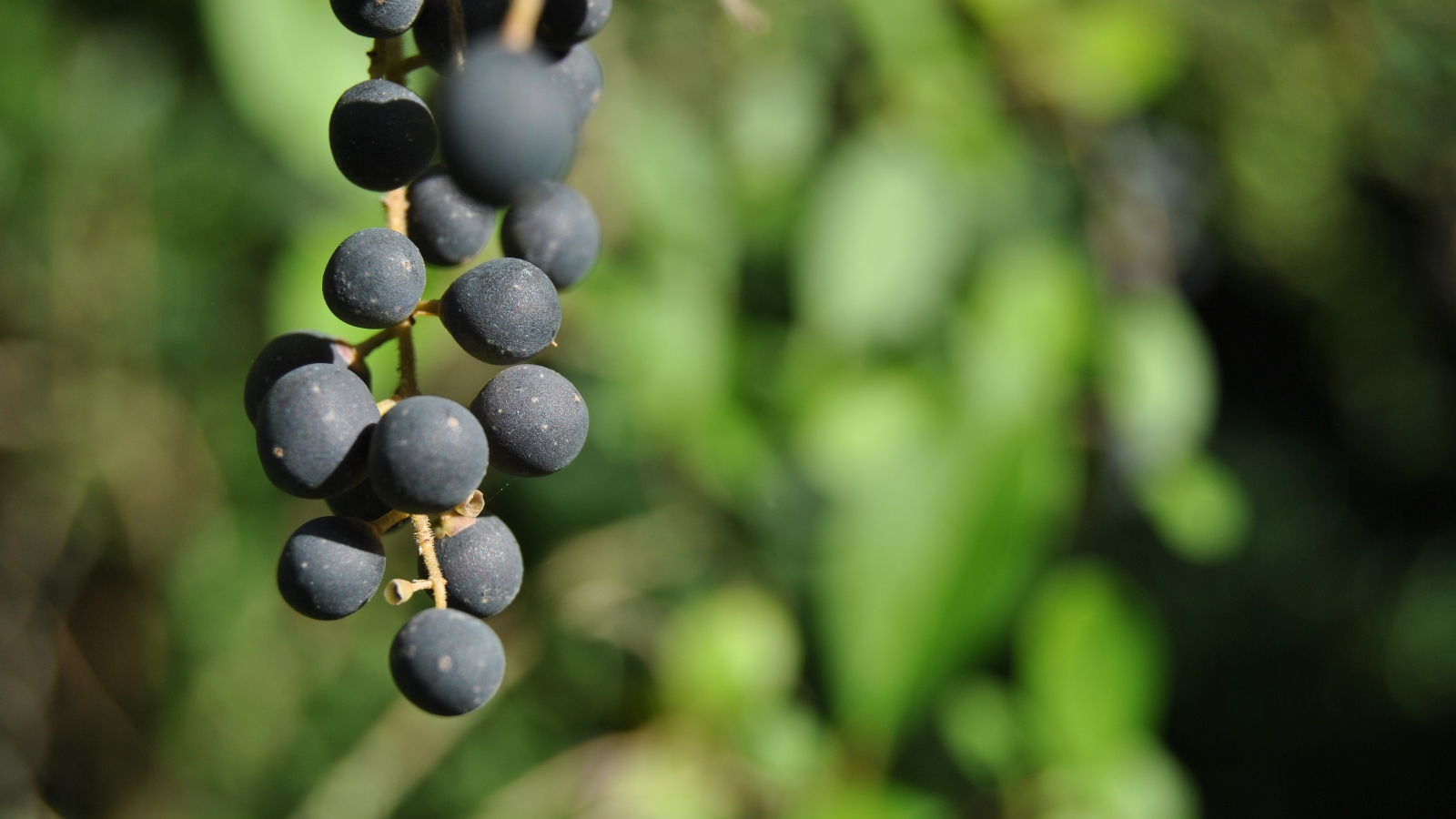Seven berries and other fruit to look for in Winter
A naturalist in the Gulbenkian Garden
It is at this time of year that fleshy fruit, better known as berries, become more visible. They are available as food for resident and wintering birds, now that the days are getting colder and thus the seeds of these plants are transported to other places.
Here are seven suggestions of plants that produce berries and other fruit, which we challenge you to look for whilst you walk through the garden or other green spaces.
Holly
Ilex aquifolium
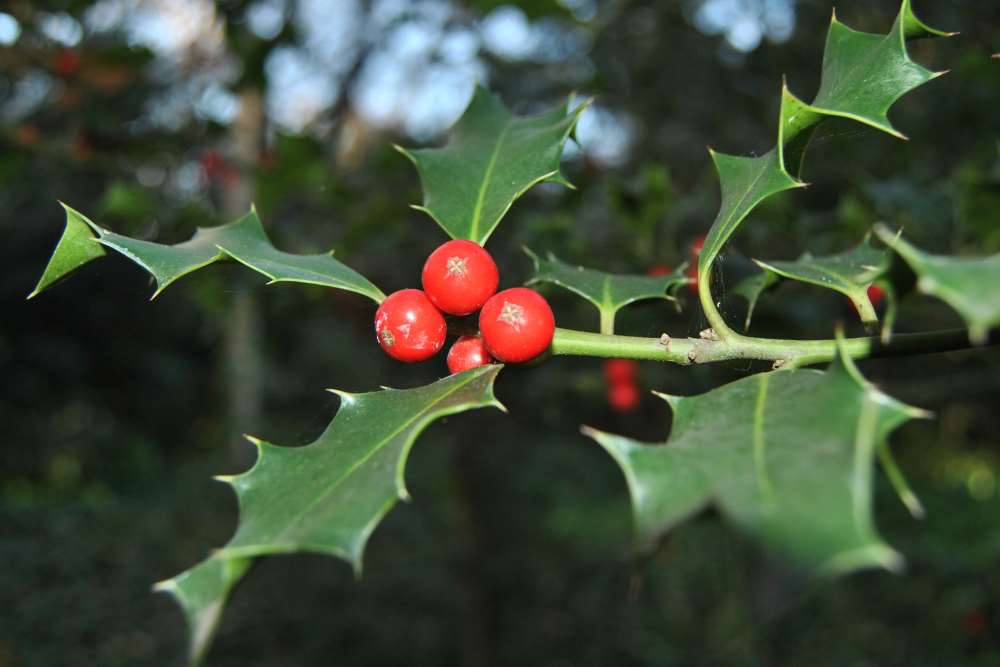
This species is very much associated with Christmas, with its showy red berries. It became a victim of its popularity and today it is legally prohibited to cut or pick holly but it can be bought in nurseries. In nature, it is a dioecious species, with plants producing both male and female plants and only the latter have berries.
Hawthorn
Crataegus monogyna
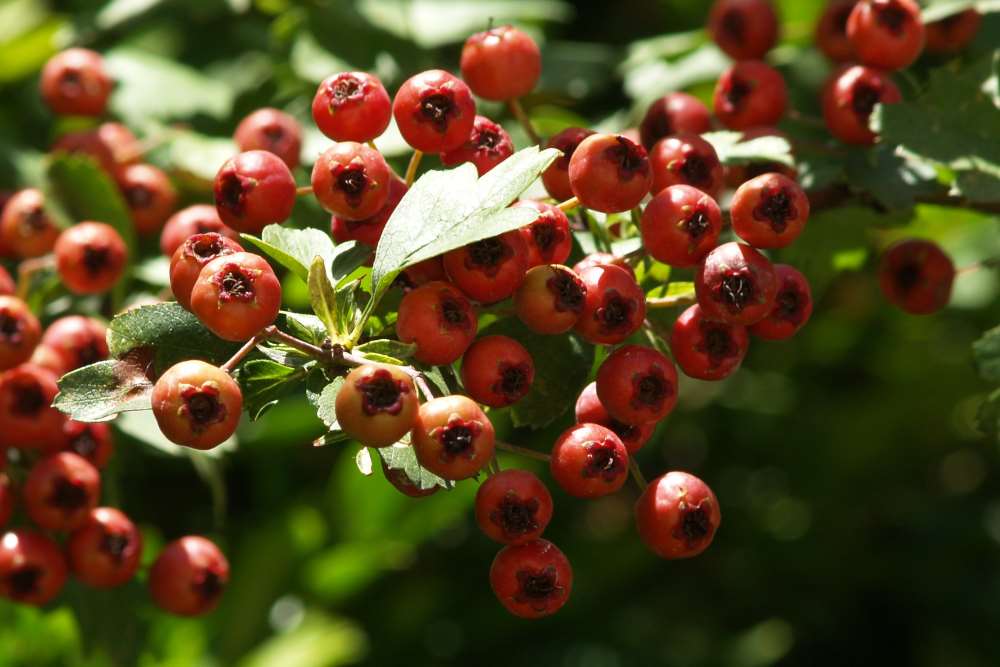
The small red fruits of this deciduous shrub – which can grow into a small tree – are called Haws. Some people use them for making jams or wine. The cut-out shape of the leaves helps recognize this species, which belongs to the same family as roses and strawberries (Rosaceae). It is native to the countries of Europe, including Portugal, as well as Asia and Northwest Africa, and can live up to 500 years.
Laurustinus
Viburnum tinus
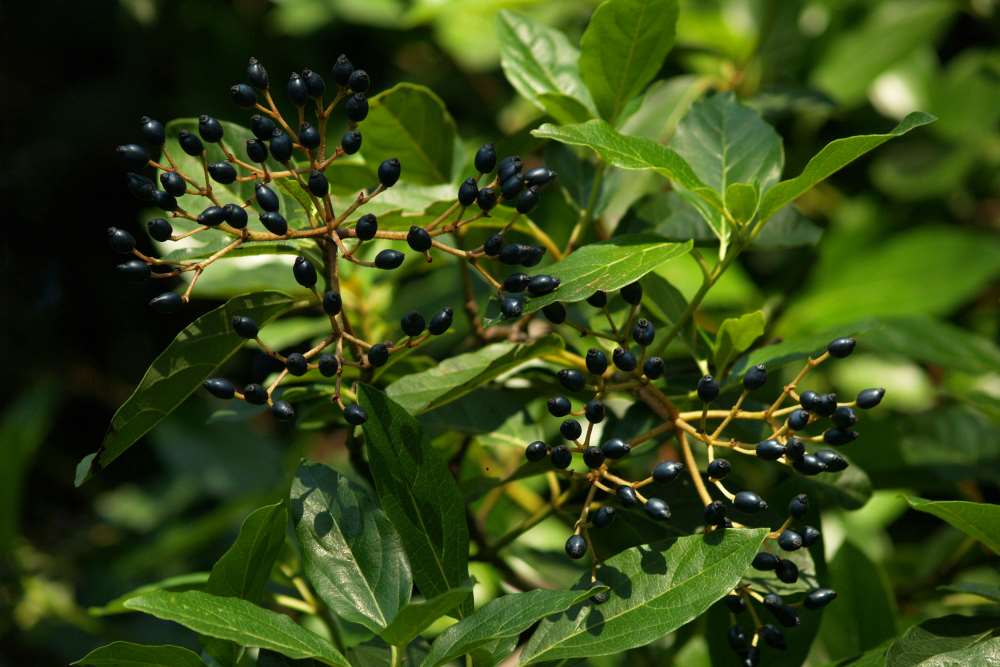
This shrub, native to the countries of Southern Europe and North Africa, features metallic blue, ovoid-shaped berries and is appreciated for being very decorative. It was given the name ‘laurus‘, which means ‘wild bay’ because its leaves resemble those of the bay.
Myrtle
Myrtus communis
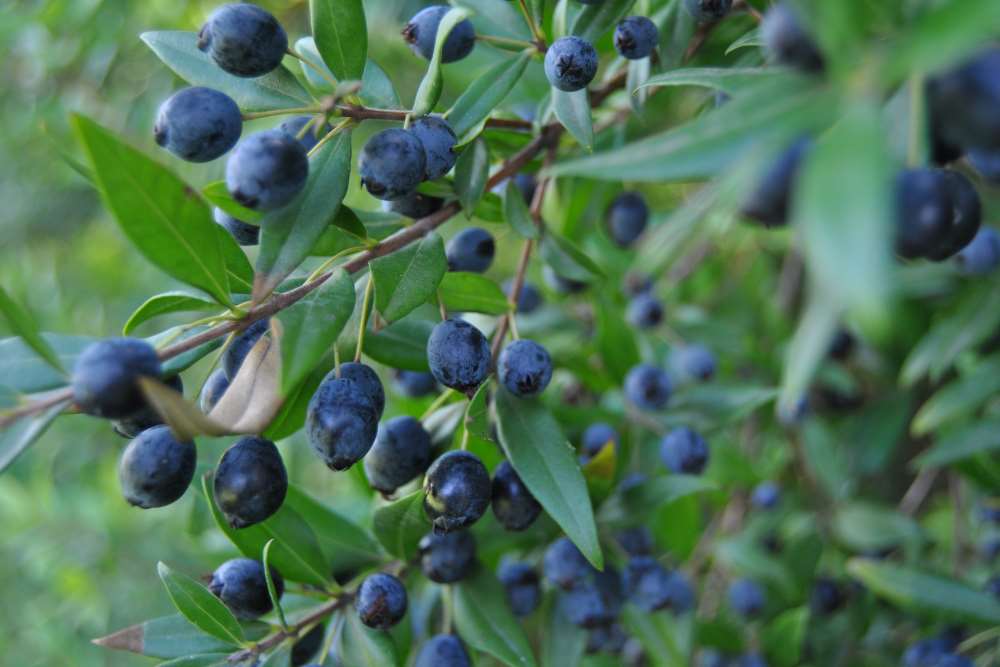
The violet fruits of this shrub are used to make a traditional liquor from Sardinia and Corsica. The myrtle is native to the Mediterranean and Southwest of Europe and was associated in Greek mythology with Aphrodite, goddess of love. In the Garden, at least three varieties of this plant can be found, including the so-called Myrtus communis subsp. Tarentina, which is smaller and more compact.
Butcher’s Broom
Ruscus aculeatus
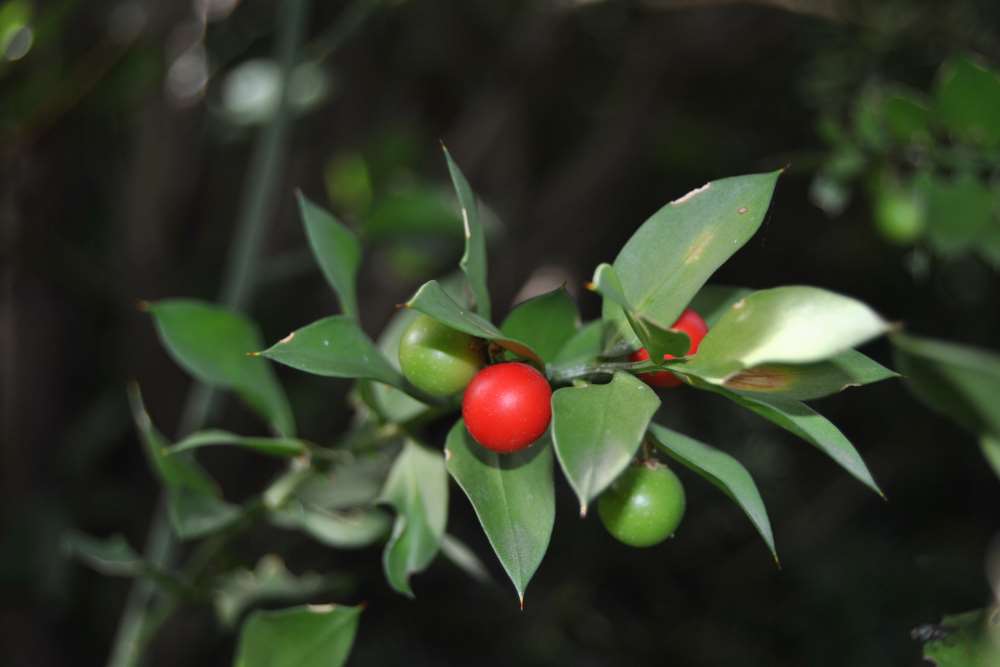
Round and bright red, the fruit of the butcher’s broom grow on stems that are leaf-shaped. This shrub that is native to Europe and North Africa was formerly very popular as a Christmas decoration, so it became a protected species. The butcher’s broom is also known as a box holly or even sweet broom. Why? It’s because, in the past, its branches were used to make brooms.
Chinese Privet
Ligustrum sinense
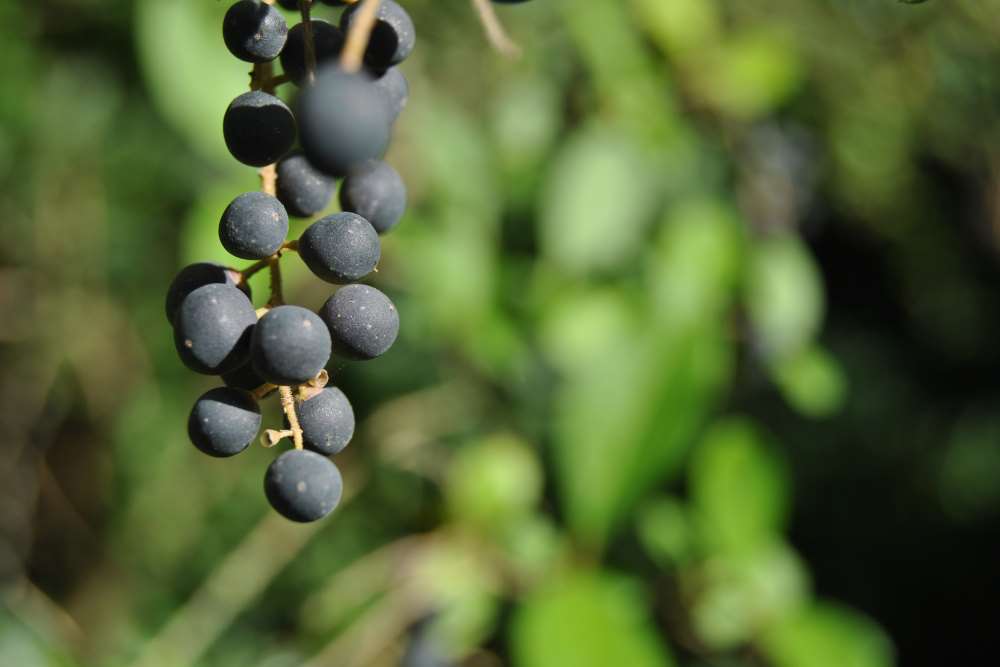
Originating in China, the privet has purplish black berries, much appreciated by birds, but considered toxic to humans. This shrub is also called the Chinese linguster. Curiously, the first Westerner to describe this species was a Portuguese Jesuit missionary, João de Loureiro, in his work ‘Flora Cochinchinensis’, published in 1790.
Dog Rose
Rosa canina
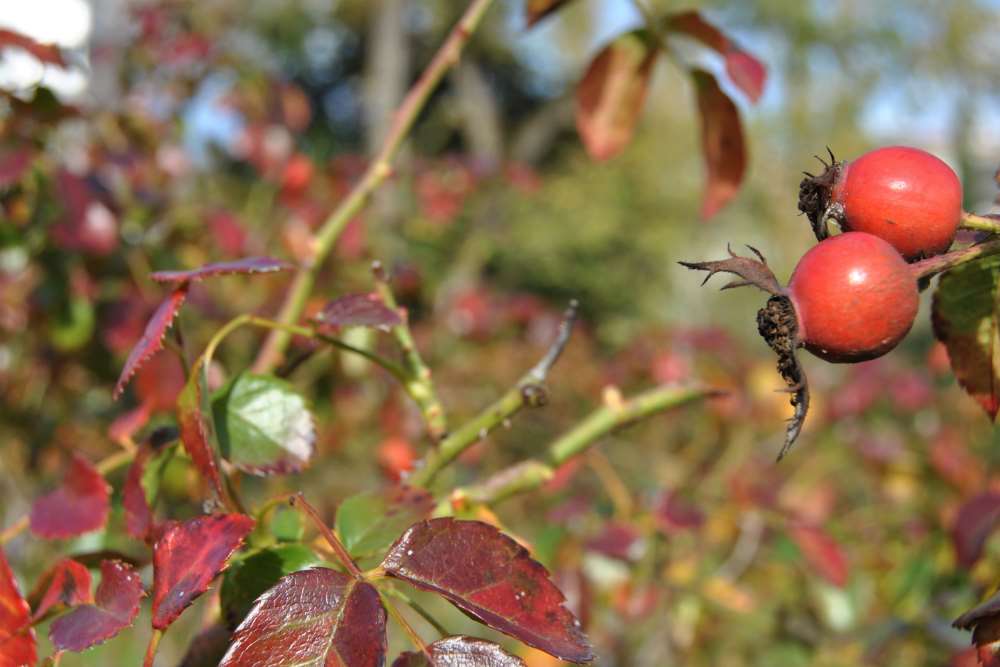
Also known as the wild rose, is a rose bush native to much of Europe and the temperate zones of Asia and North Africa. This shrub’s small fruit – pseudo-fruit in fact, since they grow from a plant tissue next to the flower – are known to be very rich in vitamin C. Sometimes they are used in jams or even in ice–cream.

